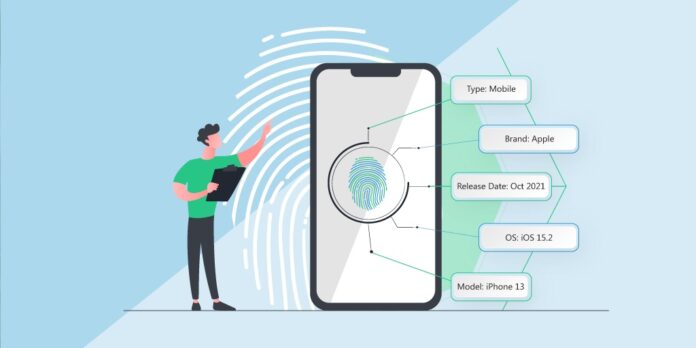
Advertisers transitioned from offline to online advertising, utilizing personalized ad targeting based on user behavior and location. This approach, largely reliant on browser cookies, became the industry standard for online advertising. However, browser limitations, user removal, and ad blockers have not improved cookie dependability.
Device Fingerprinting: What Is It?
Device fingerprinting is a method of identifying a device or browser based on its unique configuration, which is stored server-side in a database, unlike web cookies, which are kept on the user’s device. Learn about device fingerprinting online
What Data Is Gathered to Produce a Fingerprint on a Device?
Device fingerprinting provides a wealth of information in addition to session cookies; it is provided each time a web request is made to a server. Device-fingerprinting services use a variety of data points to combine to produce fingerprints:
- Internet protocol address
- headers for an HTTP request
- string user agent
- Plugins that are installed
- Time zone of the client
- Details about the client device, including the operating system, language, screen resolution, and touch support
- Flash information from a Flash plugin
- a list of the installed fonts
- Silverlight information
- List of forms of mime
- date and time
Why Use Fingerprints on Devices?
The rise of multiple devices in online activities is posing challenges for businesses in establishing human connections with target markets, with privacy concerns and increased usage of ad blockers impacting ROI-conscious marketers.
How Does Fingerprinting on Devices Operate?
Device fingerprinting is a method that uses device data from a user’s website visit to identify them. It involves a JavaScript component called a device fingerprint tracker, which compiles and gives a unique fingerprint. This data is stored on the server side, making it difficult to prevent. Some browser plugins protect against services auditing browsers and generating device fingerprint reports.
Potential Applications for Fingerprinting Devices
Devices have numerous variables, making them highly unlikely to be identical. Device fingerprinting, while useful for targeting, can also prevent bank fraud and aid digital rights administration.
Tracking and Analytics
Analytics and ad tracking objectives are perhaps the most common uses of device fingerprinting. Device fingerprinting is used in the context of web analytics to precisely identify and report on unique (i.e., returning) visitors.
Stopping Bank and Credit Card Fraud
Device fingerprints can help identify online banking sessions and credit card fraud by identifying unique queries made from the same device, even if done through a proxy, different credit cards, or fictitious IP addresses.
Fighting Online Fraud
Device fingerprinting, a method used to detect fraudulent orders, faces challenges due to the GDPR’s imprecise definition of personal data. Processing personal data under GDPR is permissible if it satisfies one of six legal grounds, including permission or a legitimate interest. However, it’s only used in exceptional circumstances like fraud prevention or identity theft prevention. Businesses must determine their legitimate purpose in gathering and processing user fingerprints to comply with the law.

